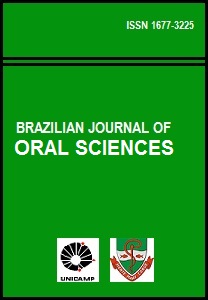Abstract
Aim: To assess the cytotoxicity of polycarbonate orthodontic brackets. Methods: Polycarbonate brackets from two different manufacturers, namely, Composite bracket (Morelli™) and Silkon Plus bracket (American Orthodontics™), were assessed. In addition to these two experimental groups, other three control groups were included: Positive Control Group (C+) consisting of amalgam cylinders, Negative Control Group (C-) consisting of glass rods, and Cell Control Group (CC) consisting of cells not exposed to any material. All brackets were previously sterilized under ultra-violet light (UV) and, then, immersed in Eagle’s minimum essential media (MEM) for 24 hours, after which the supernatants were removed and placed into contact with L929 fibroblast cells. Cytotoxicity was evaluated at 24, 48, 72 and 168 hours. After contact with MEM, the cells were further incubated at 37o C for 24 hours and 100 mL of 0.01% neutral red dye were added. The cells were incubated again at 37o C for three hours to incorporate the dye. After this period, the cells were fixed and viable cell counting was performed by spectrophotometry at 492 nm wavelength. Results: No statistically significant difference was found between the experimental groups (1 and 2) and the negative and cell control groups (p > 0.05). The Positive Control Group exhibited high cytotoxicity throughout experimental period are differed significantly from the other groups (p < 0.05). Conclusions: Polycarbonate orthodontic brackets were found not to be cytotoxic within the evaluated experimental period.The Brazilian Journal of Oral Sciences uses the Creative Commons license (CC), thus preserving the integrity of the articles in an open access environment.
Downloads
Download data is not yet available.

